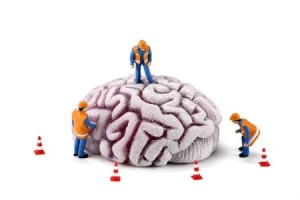A Drug in Search of a Disorder
When the DSM-5 was published in May of 2013, binge eating came out of the closet of Appendix B, the section for potential “disorders” needing further study. “Binge Eating Disorder” became a psychiatric diagnosis (Code: 307.51) in its own right. Before that time, binge eating had received a backhanded diagnosis under the rubric of “eating disorder not otherwise specified.” Without official standing as a coded eating disorder, binge eating suffered from diagnostic insecurity and poor self-esteem. It didn’t have an official diagnostic category like anorexia and bulimia or an FDA-approved medication to treat it. But now, less than two years since it became an official psychiatric disorder, that is no longer the case.
The American Psychiatric Association (APA) defined binge eating disorder as: “recurring episodes of eating significantly more food in a short period of time than most people would eat under similar circumstances.” Some episodes would include marked feelings of a loss of control. A binge eater might eat too quickly, even when not hungry. They may feel guilty, embarrassed or disgusted. They may binge eat alone to hide the behavior. “This behavior is associated with marked distress and occurs, on average, at least once per week over three months.” There is a more complete description of the diagnostic symptoms here in “Promoting Amphetamines for Over-Eating.”
On January 30, 2015, the FDA announced that the ADHD drug Vyvanse (lisdexamfetamine dimesylate) was approved to treat binge-eating disorder in adults. It is the first such drug approved to treat this condition. “Vyvanse was reviewed under the FDA’s priority review program.” Expedited reviews can be done to treat a serious condition, especially if it’s seen to provide “a significant improvement” over available therapies. But, “Vyvanse is not approved for, or recommended for, weight loss. Its efficacy for weight loss has not been studied.”
Common side effects from Vyvanse include: dry mouth, insomnia, increased heart rate, jittery feelings, constipation, and anxiety. More serious, but less common side effects include: “psychiatric problems and heart complications, including sudden death in people who have heart problems or heart defects, and stroke and heart attack in adults.” Vyvanse might also cause “psychotic or manic symptoms, such as hallucinations, delusional thinking, or mania, even in individuals without a prior history of psychotic illness.” Oh, and it’s a Schedule II controlled substance with a high potential for abuse. In fact, OxyContin, fentanyl and cocaine are also Schedule II controlled substances. The DEA said these drugs are considered dangerous, “with use potentially leading to severe psychological and physical dependence.”
The FDA Adverse Events Summary for Vyvanse reported the following adverse events out of 14,311 consumers to its FDA Medwatch reports between 2004 and 2012: off-label use; insomnia; DECREASED APPETITE; aggression; headache; anxiety; nausea; DECREASED WEIGHT; irritability; fatigue; SUICIDAL IDEATION; depression; agitation; overdose; feeling abnormal; abnormal behavior.
The New York Times reported that the marketing strategy for Vyanse sheds light on how pharmaceutical companies seek to “influence the treatment and diagnosis of a medical condition” in order to make billions of dollars in sales. Shire, the pharmaceutical company dispensing Vyvanse, seems to have followed a familiar drug industry method of promoting awareness of a disorder before more directly marketing its treatment.
Soon after Shire won FDA approval of its drug to treat Binge Eating Disorder, Monica Seles began to make the rounds of television talk shows such as “Good Morning America” and “The Dr. Oz Show” to relate her personal struggle with binge eating. She was also interviewed by People Magazine. Seles said that one of the reasons she decided to do this campaign was “to raise awareness that binge eating is a real medical condition.” Seles is a paid spokesperson for Shire. She declined to say what she’s getting paid by Shire.
Shire CEO Flemming Ornskov said that about five years ago researchers noticed the similarities between ADHD and binge eating, so they decided to study Vyvanse for the condition. As early as 2011, Shire’s CEO said that the company hoped to generate “multiple billions of dollars” from expanding Vyvnase use into new areas of illness, like schizophrenia, depression and binge-eating. International Business Times reported that Vyvanse made $1.228 billion for Shire in sales for 2013. The company hoped to grow its overall revenue from the $4.91 billion it made in 2013 to $10 billion by 2020 and Vyvanse is a significant part of that projection. Shire’s current patents for Vyvanse don’t expire until 2023. The approval of Vyvanase for BED means that Shire will gain an additional three years of exclusivity with the drug.
In September of 2014 Shire paid $56.5 million to settle claims it violated the False Claims Act related to marketing and promotion practices with some of its various drugs. According to the Justice Department memo detailing the settlement, Shire promoted Adderall XR for “certain uses despite a lack of clinical data to support such claims.” Shire also allegedly promoted Adderall XR to “prevent poor academic performance, loss of employment, criminal behavior, traffic accidents and sexually transmitted disease.” Vyvanse was also mentioned in the lawsuit. Shire sales reps and other agents “made false and misleading claims” about the efficacy and abuseability of Vyvanse. Oh, and it was said to prevent “car accidents, divorce, arrests and unemployment.”
The allegations resolved by the settlement arose from a lawsuit filed by Dr. Gerardo Torres, a former Shire executive, and a separate lawsuit filed by Anita Hsieh, Kara Harris and Ian Clark, former Shire sales representatives. The lawsuits were filed under the False Claims Act’s whistleblower provisions, which permit private parties to sue for false claims on behalf of the government and to share in any recovery. Torres will receive $5.9 million.
In her article for The New York Times, Katie Thomas quoted Dr. Timothy Walsh of Columbia University, as saying: “Once a pharmaceutical company gets permission to advertise for it, it can often become quite widely prescribed, and even tend to be overprescribed, and that’s a worry.”
There were 3 clinical trails in process for additional potential drug treatments for BED: Cymbalta (Eli Lily), Lamictal (GlaxoSmithKline), and Nuvigil. Cosgrove et al. reported that the DSM-5 work group that approved binge eating as a diagnosis included three individuals with financial ties to Eli Lily, three people with relationships to GlaxoSmithKline and one person with a relationship to Shire.
Several articles have noted a variety of concerns with the FDA approval of Vyanse to “treat” Binge Eating Disorder. International Business Times quoted Sandy Walsh of the FDA office of media affairs as saying they had no direct evidence of how Vyvanse worked in BED: “The exact mechanism of action of the drug in reducing the symptoms of BED is … unknown.” Melissa Gerson, the clinical director of an outpatient treatment center specializing in eating disorders, said she would not recommend a drug alone to treat BED. “I can’t imagine how you would see any long-term improvements in the symptoms.”
A Shire website, BingeEatingDisorder.com noted how someone could talk to their doctor about BED. They provided a Doctor Discussion Guide, saying on its link, “Not sure how to start the conversation with your health care provider?” A tip at the bottom of the homepage suggested that the individual could “Print, e-mail, or take a screen shot of this page, and bring it to discuss with your health care provider.” The New York Times reported that some experts were concerned that the content appeared to coach patients on how receive a diagnosis or shop for a new doctor if they weren’t successful.
Some drug safety experts questioned why the FDA fast tracked approval of Vyanase—even foregoing a review by an advisory committee. For decades, amphetamines like Vyanase, have been known to be a widely abused class of drugs when prescribed for obesity. The marketing end run done by Shire to avoid this pitfall was to promote Vyanase for binge eating and acknowledge that about 80% of the people with BED are overweight or obese WHILE COMPLETELY IGNORING the history of amphetamine abuse with weight loss. Don’t forget that weight loss and appetite suppression are already known to be common side effects when taking Vyanase and other amphetamines. And the FDA didn’t see this move or call them on it?
A spokesperson for the FDA said that Vyanase was granted priority approval because there was no other drug treatment available for BED. “And it did not ask an advisory committee to review the issue because Vyanase is already sold as an ADHD drug and its safety profile is well known.” REALLY? Dr. Daniel Carlatt said:
I’m concerned that the FDA’s approval of Vyvanse for binge eating disorder is going to worsen our problems with stimulant abuse. . . . Vyvanse is a derivative of Dexedrine. We’ve seen epidemics of Dexedrine abuse in the past when it was used to help people diet. I predict that the FDA has just opened the gates to another similar epidemic – after all, binge eating disorder is a subjective diagnosis that could be potentially expanded to cover many millions of people.
Revised and updated with information on Shire paying $56.5 milion to resolve civil claims it violated the False Claims Act.






